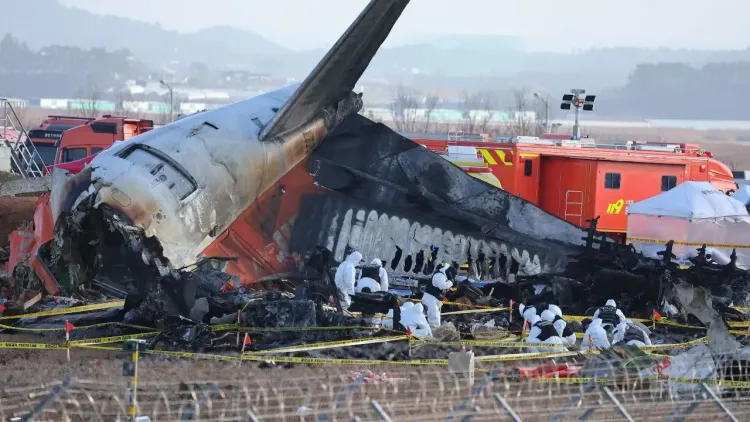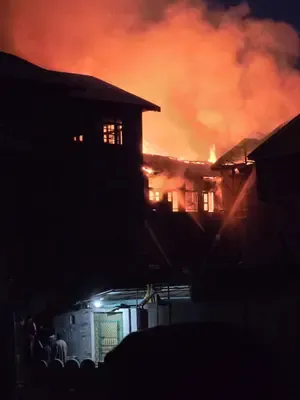Jeju Air Incident Underscores Urgent Need for Updated Airport Runway Safety Regulations

Seoul, Dec 31 (NationPress) South Korea's aviation specialists on Tuesday emphasized the necessity for revising regulations that dictate airport safety, especially those relating to runway safety zones, following the emerging consensus that a concrete structure located near the runway may have intensified the casualties from the Jeju Air crash this week.
The concrete installation at Muan International Airport houses a navigation system that aids in aircraft landings, referred to as a localiser, and is situated approximately 250 metres from the runway's end.
The Jeju Air B737-800 aircraft executed a belly landing at the airport and subsequently exploded on Sunday after colliding with the structure, resulting in the deaths of 179 out of 181 individuals on board.
Numerous experts have proposed that the number of casualties could have been significantly lower had the concrete structure not been present.
The transport ministry has defended the placement of the localiser, asserting that it was installed in accordance with current regulations.
The government's aviation obstacle management guideline mandates that all equipment or installations considered obstacles on airport grounds must be mounted on frangible structures, but this requirement is only applicable within the designated runway end safety area (RESA).
RESA designates the area beyond the runway's end, intended to mitigate aircraft damage in cases of overruns or short landings.
The ministry clarified that the localiser equipment at Muan was not bound by this requirement, as it was positioned outside the airport's 199 metre long RESA.
The minimum RESA distance required by international standards is 90 meters, with a recommended distance of 240 metres, according to the ministry.
The ministry acknowledged that certain domestic airports, including those in Sacheon, Gyeongju, and Muan, possess RESAs shorter than the recommended 240 metres.
An additional government guideline concerning the design of airport and airfield facilities specifies that localisers should be integrated within the extended RESA for precision approach runways.
Experts, however, have stressed the importance of revising related regulations, with the majority agreeing that the localiser's presence aggravated the impact of the crash.
"While there may be no legal issues under current rules, these regulations date back to a time when such accidents were infrequent," stated Chung Yoon-shik, an aviation professor at Catholic Kwandong University.
"In light of this incident, the regulations require enhancement," he added.
Hwang Ho-won, a professor of aerospace law at Korea Aerospace University, supported this perspective, asserting that the concern is not solely about RESA distances.
"The improperly installed concrete mound should be eliminated, and an engineered materials arrestor system (EMAS) should be put in place," Hwang stated.
EMAS allows aircraft to sink into a lightweight medium, facilitating rapid deceleration during runway overruns, as reported by Yonhap news agency.
Hwang further noted, "For airports with shorter RESAs, an EMAS can substantially enhance friction to slow down aircraft, thereby improving safety during overruns or aborted takeoffs."









